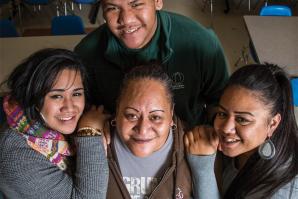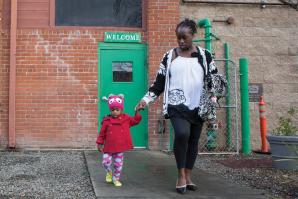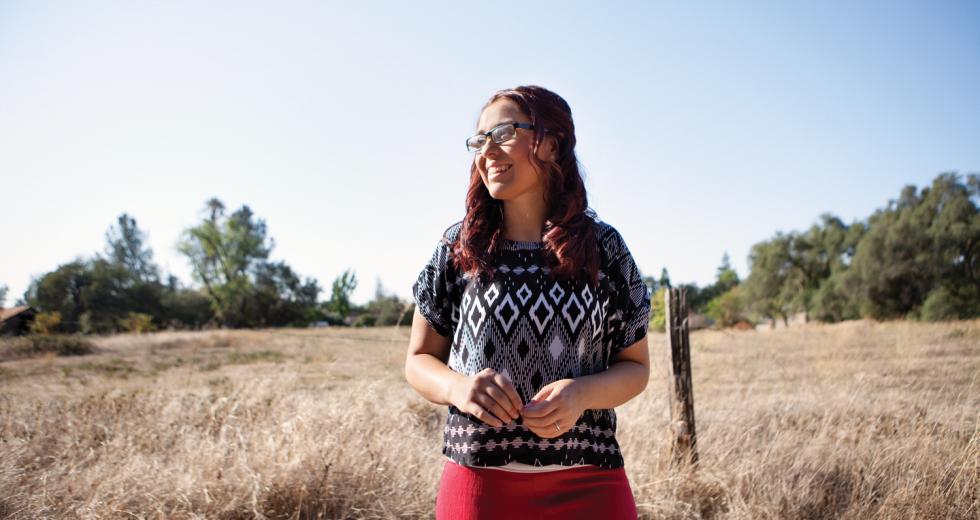For many foster youth, establishing stability within in the foster care system is exceedingly difficult. But it’s after emancipation that the realities of financial independence become even more challenging. Lacking financial skills to stay afloat, many emancipated youth wind up on the streets. But one local program is giving foster youth hope and a foundation to stand upon. The $en$e-Ability Project, which started just three years ago as a program of the United Way California Capital Region, assists foster youth in building financial assets, skills and relationships for a future of success.
Eighteen-year-old Marina Hall was a teen addict before entering Koinonia Homes for Teens, a residential treatment center for foster youth in Loomis. It was there that she was introduced to the $en$e-Ability Project.
Growing up underprivileged, Hall remembers being homeless, living in a car at times with a family of four and never having role models to look up to for guidance on how to live responsibly or manage money wisely, she says.
“Not utilizing (my) money for the right reasons, I would just buy useless things and not spend it for things that we needed for a family of four,” Hall says.
Now, her need is being met through the nonprofit program that equips foster youth with skills to save money and manage finances for future success.
The $en$e-Ability Project works as a catalyst to prepare foster youth for the realities of emancipation by providing financial literacy classes and one-on-one guidance to help them navigate through financial investments into jobs, education and housing. Moreover, the training helps equip youth, like Hall, to become emotionally capable of handling money.
“It taught me to be responsible with how I carry myself,” Hall says. “To make sure I’m using what they’ve given me. I feel like it’s a step in the right direction because it’s always a positive thing, and I feel like if I just keep that in mind, in the future I can do whatever I set my mind to.”
Through individual deposit accounts, the program helps participants establish a financial foundation. For every dollar the foster youth earn, the program will match it with $2 provided by participating banks and donor groups. The youth can earn money through incentives like improving their grades or maintaining perfect attendance in school. The money can then be used for educational needs, including computers and other school supplies, that can help break the cycle of generational poverty, says program representative Janas Durkee.
Women in Philanthropy is one of the largest regional donor groups funding the $en$e-Ability Project. WIP is a United Way’ interest group comprised of women committed to making financial literacy and life skills training accessible for foster youth, like those living at Koinonia.
“One of the things the [Women in Philanthropy] have in common is that they’re mothers, and so when they start thinking about their future — their children’s future — they also start thinking about the future of the kids in their community,” Durkee says.
Women in Philanthropy has donated $463,000 to the $en$e-Ability Project and nearly $1.3 million to United Way’s foster youth projects overall. Along with 119 other United Way women’s groups, they have helped raise $700 million since 2001 to help foster youth transition into adulthood.
WIP participants serve as role models, visiting Koinonia and other residential homes to teach financial and life skills, such as job interviewing, money management, bicycle maintenance and cooking, to prepare youth for life outside the foster care system.
According to a 2012 report from the U.S. Department of Health and Human Services, there were more than 400,000 children in foster care in the U.S. in 2011. Durkee says once youth are emancipated at age 18, they are released from the system without guidance or preparation. Many end up on the streets.
“They have so many statistics that are alarming,” Durkee says. “A much higher homeless rate once they emancipate, much higher juvenile delinquency rates, higher death rates by violence. Higher abuse rates. Lower income, lower education … It’s just appalling.”
Citibank representative Mary Hogarty, who works with United Way on the income council that oversees the $en$e-Ability Project, says giving foster youth the opportunity to learn about finances and to help them establish a bank account, gives foster youth a better start since so many people are already unbanked.
United Way’s $en$e-Ability Project has helped about 400 youth with emancipation plans to date, Durkee says. Right now, 90 percent of the 200 foster youth enrolled in the program are earning credits toward matched savings accounts, and the United Way has given out about $110,000 so far in matched savings.
Like Hall, Stephanie C., a minor who’s full identity is withheld to protect her privacy, is a foster youth at Koinonia Homes For Teens, where she was placed following her parents’ separation. There, Stephanie says she has been taught how to manage her finances properly and now feels ready to pursue her goal of becoming an Air Force pilot — an occupation she could not achieve without saving up for school.
“During high school, I kind of started going down the wrong road,” she says. “That’s when I came to Koinonia, and it’s really just given me a second chance at life.”
Stephanie just graduated from high school and says the best part about the $en$e-Ability Project is the women who show up to lead workshops and activities with a consistency many of these youth have not experienced before.
“I think a lot of us here [come] from broken backgrounds, and [we’re] not taught how to save. No one in their family teaches them that,” Stephanie says. “In the end, this is going to help us so much, and its just going to help us live life — a good life, a successful life. And I think that’s something that we all look forward to.”
One of the biggest financial incentives for the foster youth in the program is to share their stories. It’s a step encouraged by WIP because, Durkee says, it is very emotionally healing.
“They’re amazing kids,” Durkee says. “The boys come in angry, and the girls come in hollow. And by the time they leave, they’re really incredible people.”
Durkee says she wishes the project could touch half of the foster youth in the system. But she optimistically anticipates that within five years the $en$e-Ability Project could reach the whole foster care system.
“The commitment it takes from the agencies, the donors and from the Women in Philanthropy and from the banks who support it, it’s a huge commitment,” Durkee says. “But, on the other end, I don’t know why we’d ever turn our back to foster youth. We need to be opening up to more (foster youth). I wish we had a million dollars put in that area. Seriously, I think we can do an amazing job. We already are.”
Recommended For You

From Setbacks to Scholar
St. John’s Shelter Program offers women a fresh start
A twice-convicted felon, Ronita Iulio thought she had blown her last chance to salvage her life and family. After being released from prison in 2008, Iulio was anxious to reunite with her three children, but instead she faced an unsympathetic court that granted full custody to her ex-husband.

Under One Roof
Can rapid rehousing save local homeless families from life on the streets and in shelters?
Though a new rapid rehousing initiative may stymy the troubling trend locally, some providers remain concerned that a lack of mandatory supportive services and intensive case management may cause the program to exacerbate, not eliminate, the problem.



